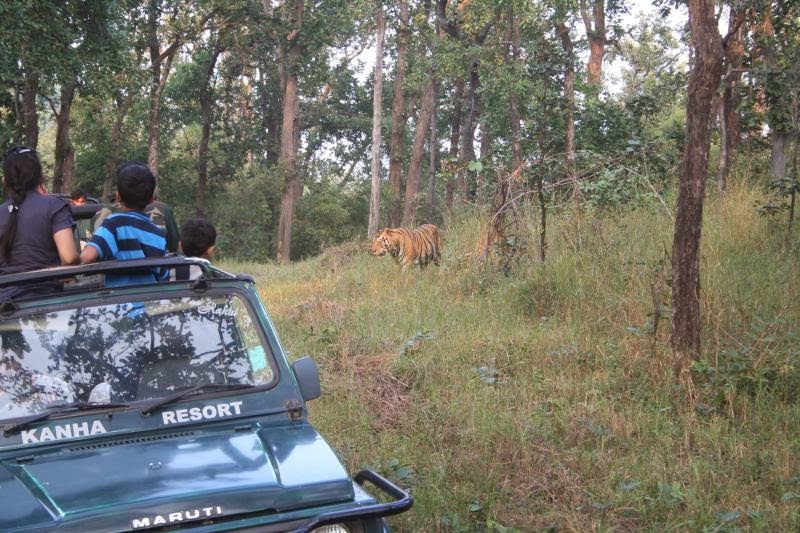India’s wildlife can be adjudged rightly with the fact that it has the largest population of tigers in the world. Apart from this fact, there are ample other features to ascertain that it is one of the fascinating delights to the discerning travelers coming from every nook and corner of the world.
Also Read : 10 Best Wildlife Safaris in South India
Also Read : 10 Best Wildlife Safaris in South India
A Wide Variety of Species
Pondering on the wildlife of India, we find that it comprises a fine blend of different types of organisms that makes it worthwhile and significant in the wildlife circles around the world.
Although there are lesser farm animals, one could always witness animals such as tigers, pythons, foxes, bears, leopards, sheep, crocodiles, camels, wild dogs, snakes, antelope and many more. A wide variety of deer species, bison along with other species are found in abundance. The mighty Asian elephant makes it charming than ever.
Also Read : 10 Best Wildlife Safaris in North India
Suggested Tour:
Also Read : 10 Best Wildlife Safaris in North India
Suggested Tour:
Indomitable Diversity
Indeed, Indian wildlife is richer than imagined with massive diversity. One can judge from the fact that Indian vicinities has got 89 national parks in total, 18 Bio reserves and more than 400 wildlife sanctuaries making it varied than ever. Ranging among the bio diverse regions of the world and homing host of other significant entities, Indian wildlife is massively rich in every aspect.
Indian wildlife becomes richer than imagined as it homes a wide number of rare and threatened animal species. It scores well on wildlife management account. As we know, according to one’s study, India along with 17 mega diverse countries homes nearly 60-70 % of the world's biodiversity.
Also Read : Top 10 Wildlife Sanctuaries in Nepal
Suggested Tour:
Scores Well on Percentage
Also Read : Top 10 Wildlife Sanctuaries in Nepal
Suggested Tour:
Scores Well on Percentage
Dividing the Indian wildlife we find that it has nearly 7.6% of all mammalian, 6.0% of flowering plant species, 12.6% of avian and 6.2% of reptilian. The forest cover of India ranges from the tropical rainforest of the Western Ghats, Andaman Islands and Northeast India stretching to the coniferous forest of the Himalaya.
There are numerous fascinating constituents including sal-dominated moist deciduous forest of eastern India along with other fascinations. There are teak-dominated dry deciduous forests as well and other worthwhile and significant aspects.
One of the interesting facts is that massively rich and varied wildlife of India has had a profound impact on every facet of Indian culture and tradition. The impact on the international level is profound that is expressed by the word, jungle, that has been incorporated by the English language. The world in fact was highlighted in the famous Jungle Book penned by Rudyard Kipling.
As far as Indian fauna is concerned, one realizes that it homes numerous mammals that includes the Asian Elephant, Sloth Bear, Bengal Tiger, Asiatic Lion, Leopard and Indian Rhinoceros. Gaur, Wild Asian Water buffalo, Gail, common Domestic Asian Water buffalo, and several species of deer and antelope are to name a few.
Suggested Tour :
Conservation Efforts
Despite of massive popularity of Indian wildlife all across, there is a need for conservation for which the efforts are going on war footing level. To this effect, it is enshrined in the Article 48 of the Constitution of India, "The state shall endeavour to protect and improve the environment and to safeguard the forests and wildlife of the country" and Article 51-A states that "it shall be the duty of every citizen of India to protect and improve the natural environment including forests, lakes, rivers, and wildlife and to have compassion for living creatures."
Suggested Tour :
Suggested Tour :










Great information about indian wildlife
ReplyDeleteIt was great reading your post. Discover wildlife in India with these highly reliable wildlife tour packages.
ReplyDeletei have already visited kanha national park it's really amazing experience to spend there
ReplyDeleteRegards
Shahid